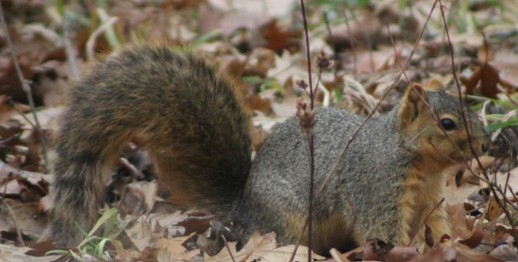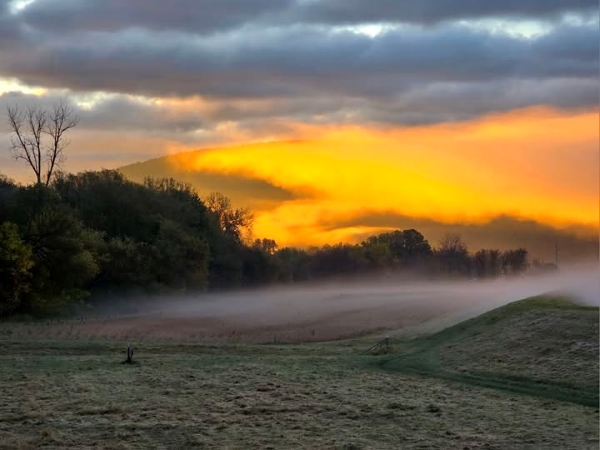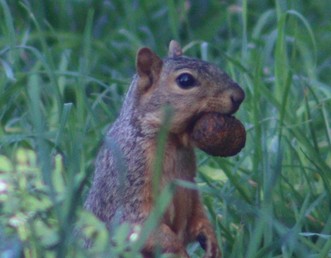The largest squirrel in our woods is growing in numbers and expanding their range
By Bob Confer,
Most of my nature library is made up of books I accumulated as a kid. For the most part, they remain accurate because animals and their behaviors really don’t change too much over the course of a few decades. Where they do occasionally need revision, though, is in the range maps.
Take the fox squirrel, for example.
Going back to the mid-1990s, fox squirrels really weren’t a thing in Western New York. Back then, if you did see one, your sightings were limited to Chautauqua County. Their traditional range had them living across the entire central US and some of the eastern US south of the NY-PA border.
Fast forward to 2025. It’s a different world. Now, fox squirrels can be found, though still quite rarely, in many parts of Western New York.
Perhaps an outcome of the maturation of woodlands that were once farmland, the New York State Department of Environmental Conservation says they can now be found in the Empire State’s 8 western counties, with the greatest numbers at the shore of Lake Erie and along the Genesee River. But, expansion of range doesn’t necessarily yield an expansion in numbers: The most recent assessment by the state says the creatures have been confirmed by just 39 NYSDEC records between 2013 and 2024 despite an intensive camera “trapping” effort.
I count myself as lucky as I get to see them often. We have a sustainable population of them in our woodlot in Gasport, which is prime habitat: They prefer open forests with mature trees and agricultural fields nearby. Outside of my home turf, though, I’ve seen them on only three occasions in WNY.
If ever you see a fox squirrel, you’ll know it because, well, they’re different.

Let’s start with the size. Fox squirrels are massive by the standards set by other WNY squirrels. They come in at 12 to 15 inches long in the body, 10 to 14 inches long in the tail, and they can weigh from one-and-a-half to a whopping 3 pounds as adults. That’s twice the total length of a red squirrel, and anywhere from 2 to 6 times their weight. As for the larger grey squirrels with which foxes are often confused, greys are still a third to a half shorter and lighter in length and weight. Those are huge differences.
You’ll see that in their gait. Whereas red squirrels seem constantly frantic and grey squirrels have a lot of bounce, the fatter fox squirrels are lumbering. Their rather slow, seemingly defenseless posture is intriguing, because the reds and greys tend to stay next to or on trees while fox squirrels will walk throughout the forest, often many yards away from trees and even out into neighboring hay fields. They slowly search for nuts, acorns, fungi, plant material and, if they’re lucky enough, bird eggs.
If those two characteristics don’t nail identification, consider their coloring. The best way to put it: Imagine if a red squirrel and a grey squirrel had a giant freak baby…that would be a fox squirrel. Many have a grayish primary to their fur which is covered with vast swaths of chestnut hues on the underbelly and on the limbs. Sometimes, fox squirrels might even be entirely rusty in appearance. You never know what to expect with their fur.
All of that makes them a sight to see.
And, hopefully, it’s a sight that stays with us and grows in numbers. Given similar habitat between northwestern Pennsylvania and eastern Ohio where they are numerous, biologists don’t know why they are not more common in WNY, or why their numbers have declined in cities where they were once more abundant (like Jamestown).
As much as we’d like to see their numbers grow, that might not be in the cards. Fox squirrels have a ravenous appetite for mast crops like nuts and acorns, more so than other squirrels do. As all of the beech trees die off across WNY the fox squirrels’ territory will be limited to stands of oak trees — and hickories if they can find them. With those beeches going the way of the dinosaur, it’s kind of a bad time for fox squirrels to make their advance across the region – it will really impede their progress or even cause them to retreat.
So, if you see one of these giant rodents, count yourself as lucky. They’re a relatively new addition to our already impressive roster of mammals but they remain a hard find across the region.
Bob Confer is the naturalist behind Exploring the Western New York Wilds series which celebrate all that is wild and wonderful about our region. You can reach him anytime at, Bob@ConferPlastics.com






